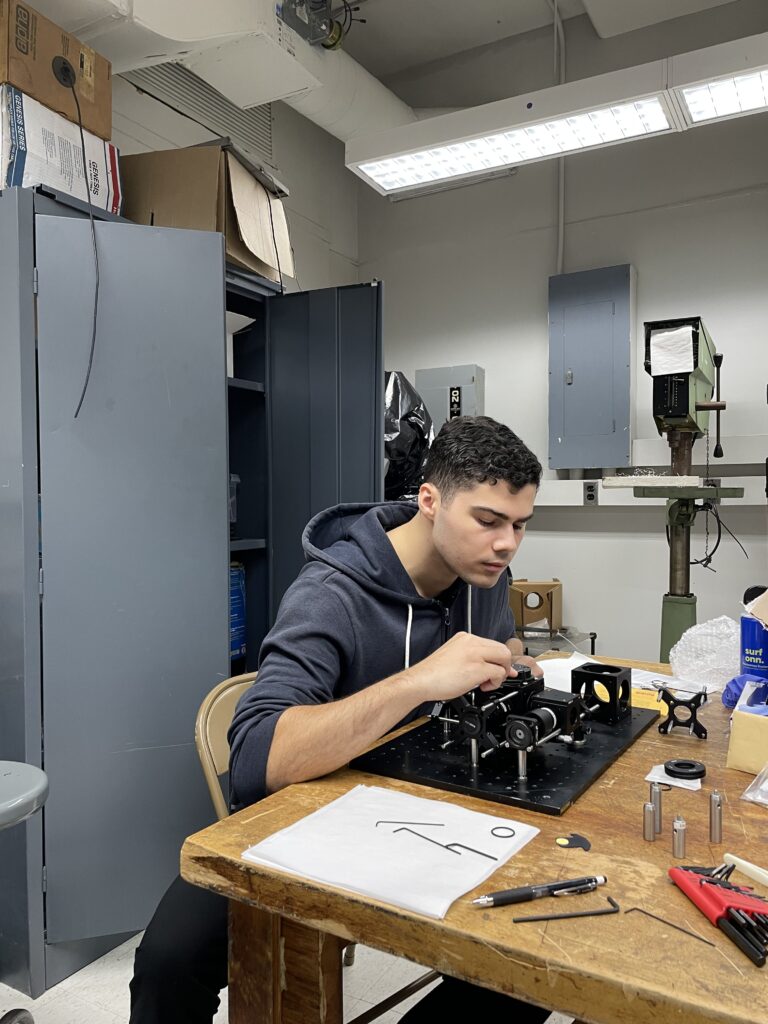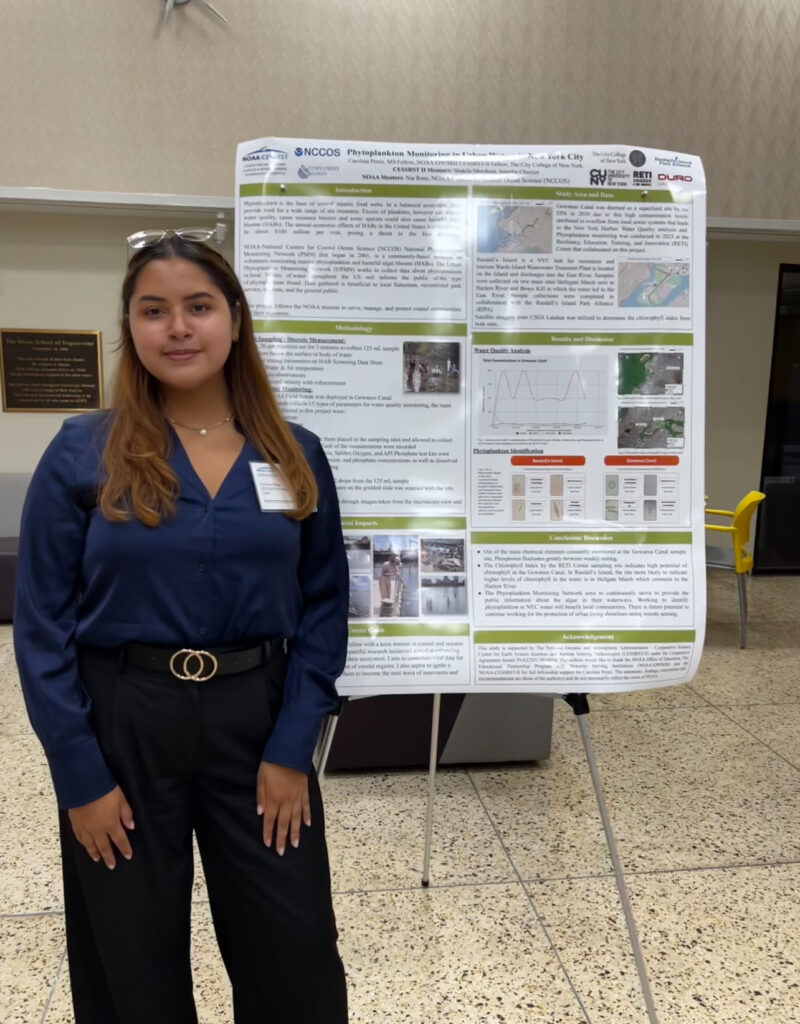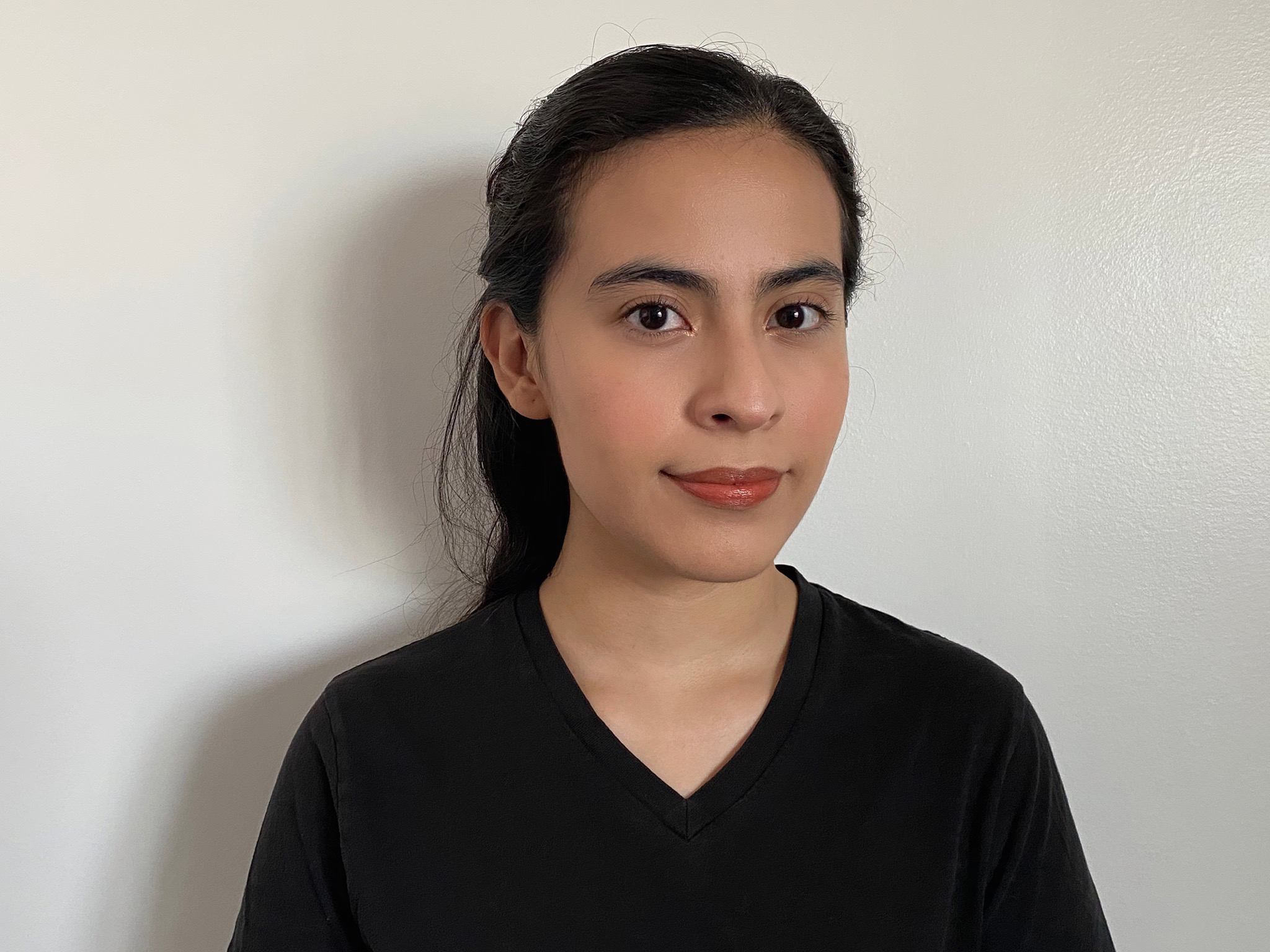The National Oceanic and Atmospheric Administration’s Center for Earth System Sciences and Remote Sensing Technologies (NOAA-CESSRST) program offers valuable opportunities for students to advance their careers through hands-on research and mentorship. The NOAA CESSRST focuses on environmental assessment, prediction and stewardship while training underrepresented minority students to create a more diverse STEM workforce.
Among the graduating graduate students from this CCNY program are Carolina Perez and Thomas Ely, whose academic journeys and research contributions highlight the program’s impact.
Perez and Ely are both CCNY undergraduate alumni. While Perez earned a Bachelor of Science in Biology in 2020, Ely earned his Bachelor of Engineering in 2022. Perez has transitioned her focus from biology and is now finalizing her Master’s in Earth and Atmospheric Science. Ely is concluding his Master’s in Electrical Engineering, and both are expected to graduate this summer.
Perez was drawn to NOAA-CESSRST due to the program’s strong reputation and opportunities for conferences and networking.
“I first heard about this fellowship through my peers, who shared nothing but great experiences about this program. Through them, I learned about this fellowship’s ability to find a mentor that matches your research goals and about the opportunity to showcase research at conferences. I was convinced and was eager to apply,” Perez said in an interview.

Ely working on a part of his Lidar system project. Photo: Courtesy of Ely.
In contrast to Perez, Ely was particularly attracted by the research and professional development opportunities it offered.
“When I first visited the Optical Remote Sensing Lab at The Grove School of Engineering, I saw that there was an opportunity to get involved in many interesting projects that could be tailored to my goals and interests,” Ely said.
Perez’s current research within the NOAA-CESSRST program focuses on phytoplankton diversity and assessing water quality in the Gowanus Canal, one of the most contaminated sites in the United States due to sewage overflows. By monitoring phytoplankton species and analyzing water samples, Perez aims to identify and track harmful algal blooms, providing crucial data to improve environmental health and safety.
“My goals are to detect and monitor phytoplankton and to develop an interactive map that tracks chlorophyll levels in urban bodies of water across New York using remote sensing satellite data. This initiative aims to raise awareness about the significance of water quality, making water science more accessible to local communities, students, and organizations,” she explained.
Ely’s research involves developing and deploying advanced remote sensing technology for atmospheric ozone profiles.
“I’ve had the opportunity to be directly involved in constructing and deploying a new Lidar system designed for the remote sensing of ozone,” Ely shared. “We completed and tested the system in July of 2023, then deployed the system at Columbia University’s Lamont Doherty Earth Institute campus in Palisades, New York.”
The Lidar system stands out for its mobility, enabling measurements of atmospheric ozone profiles at various sites. Ely’s work contributes to better understanding and managing air quality, showcasing the practical applications of his electrical engineering skills within environmental science.

Perez with her research poster, “Phytoplankton Monitoring in Urban Waters in New York City” at the CESSRST-II First Annual Summer Symposium at CCNY (2023). Photo: Courtesy of Perez.
Both Perez and Ely have highlighted the transformative impact of the NOAA-CESSRST program on their academic and professional lives. The program’s focus on providing resources, mentorship and hands-on research opportunities has been instrumental in their development as scientists.
Perez emphasized the importance of the program’s support system, which has significantly enhanced her research capabilities.
“Not only has the program allowed me to find a mentor with a similar and applied research background as me, but it also provides unique learning opportunities through specialized courses outside of regular classes,” Perez said.
These sessions, held during summer and winter, involved collaboration with professors from various CESSRST-affiliated institutions, such as the University of Puerto Rico and the University of Texas.
Perez and Ely deeply appreciate their experiences with NOAA-CESSRST, they said.
“I truly am grateful to be part of this fellowship program,” Perez said. “If it weren’t for it, I wouldn’t have been so motivated to go and get my master’s. They really want to see you succeed.”
She emphasizes the program’s supportive environment, encouraging students to voice their concerns to mentors dedicated to their success and highlighting its commitment to fostering the next generation of environmental scientists and engineers.

Sofia is a graduate student at CUNY Brooklyn College, where she’s pursuing her M.S. in Media Studies. In addition to writing for The RICC, she’s a writer for the features section of Brooklyn College’s student-run newspaper, The Vanguard. She is also a dedicated writer for the Brooklyn News Service.